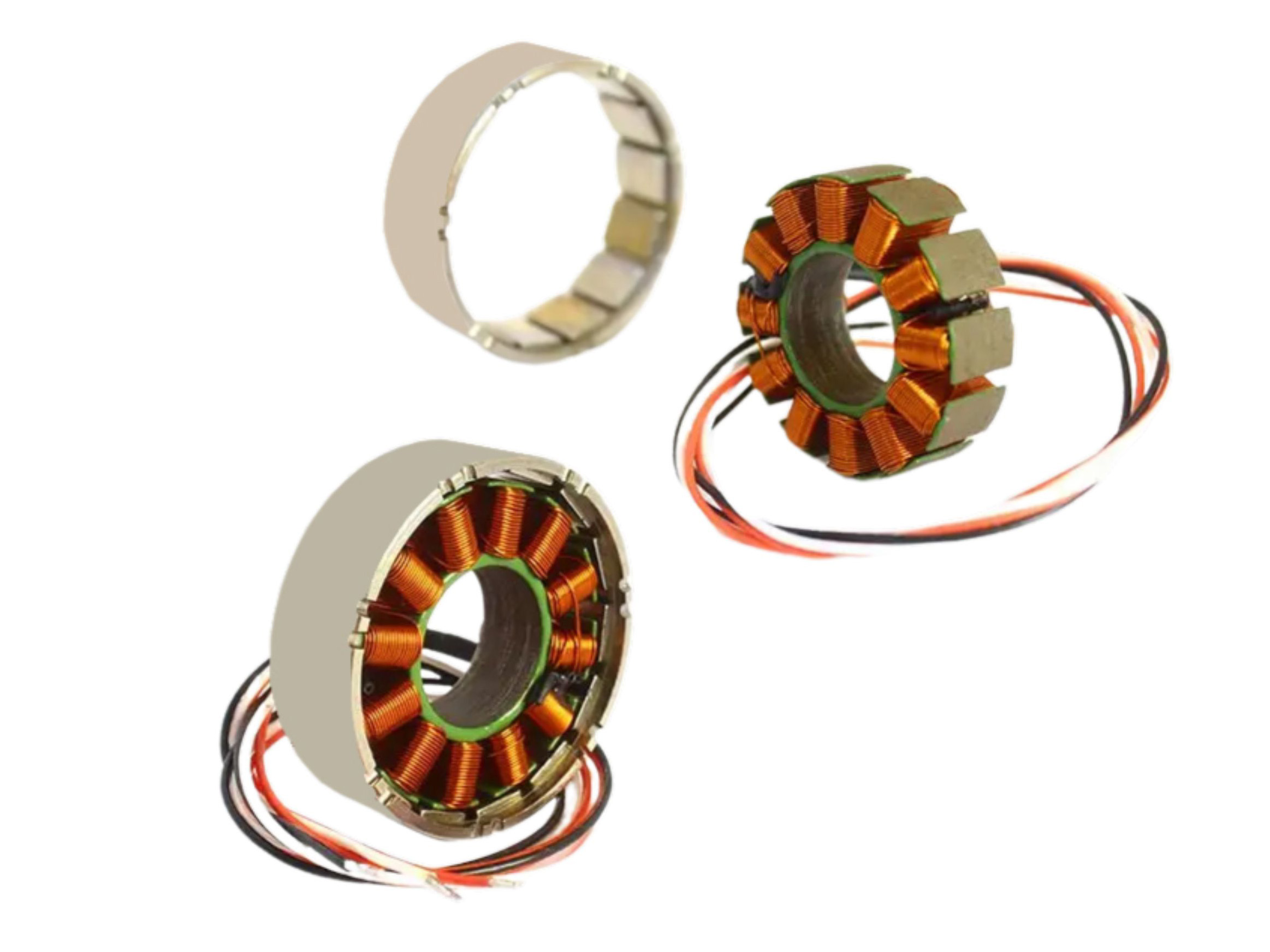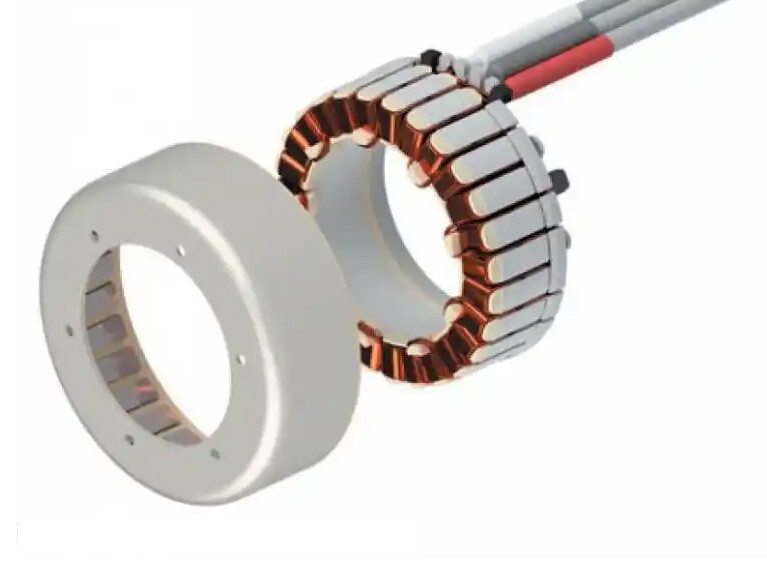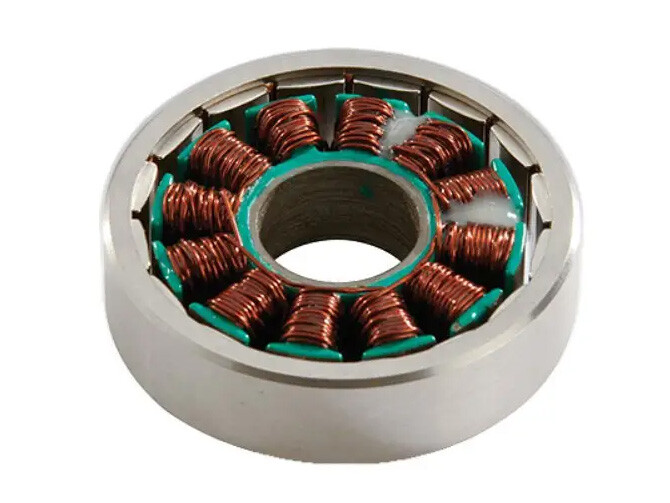● Introduction
Features
● Optimized External Rotor Structure
Rotor and shell are integrated, enabling higher moment of inertia through external rotation, improving low-speed stability and heat dissipation (heat is rapidly conducted through the shell).
Internally positioned stator minimizes electromagnetic interference on the load, ensuring precision in sensitive control scenarios.
● High Torque Density and Efficiency
Utilizes multi-pole permanent magnet layouts and vacuum potting technology, increasing torque density by 20%-30% compared to conventional motors, delivering higher torque per unit volume.
Reduces mechanical transmission losses, improving energy transfer efficiency by 10%-15% and lowering iron/copper losses.
● Dynamic Response and Precision
Directly drives loads, eliminating backlash from gears/belts, boosting response speed by 25%-40%, and achieving micrometer-level positioning accuracy.
External rotor structure supports low-speed high-torque output, ideal for smooth operation and precision-critical applications.
● Enhanced Heat Dissipation and Lightweight Design
Direct contact between the external rotor and shell, combined with high thermal conductivity materials, improves heat dissipation efficiency by 20%-30% and reduces temperature rise by 15%-25%.
Removal of redundant frames reduces weight by 30%-50%, making it suitable for weight-sensitive applications like aircraft or mobile robots.
● Customizable Integration Flexibility
Supports parameter customization (rotor dimensions, magnetic waveforms) for seamless embedding into mechanical structures, meeting diverse design requirements.
Modular design simplifies maintenance and reduces integration complexity.
● Quiet Operation and Low Maintenance Costs
No mechanical transmission friction, operating at sound pressure levels below 50dB.
Simplified structure reduces wear-prone components, lowering maintenance frequency by 60%-80%.
Specification
Sheet 1
- frameless torque motor
- frameless direct drive motor
- frameless drive
- frameless torque drive
- robotic frameless torque motor
- Frameless Rotary Motors
- frameless servo motors
- Brushless Torque Motor
- brushless direct drive torque motors
- high torque brushless
- high torque brushless servo
- motor brushless torque



